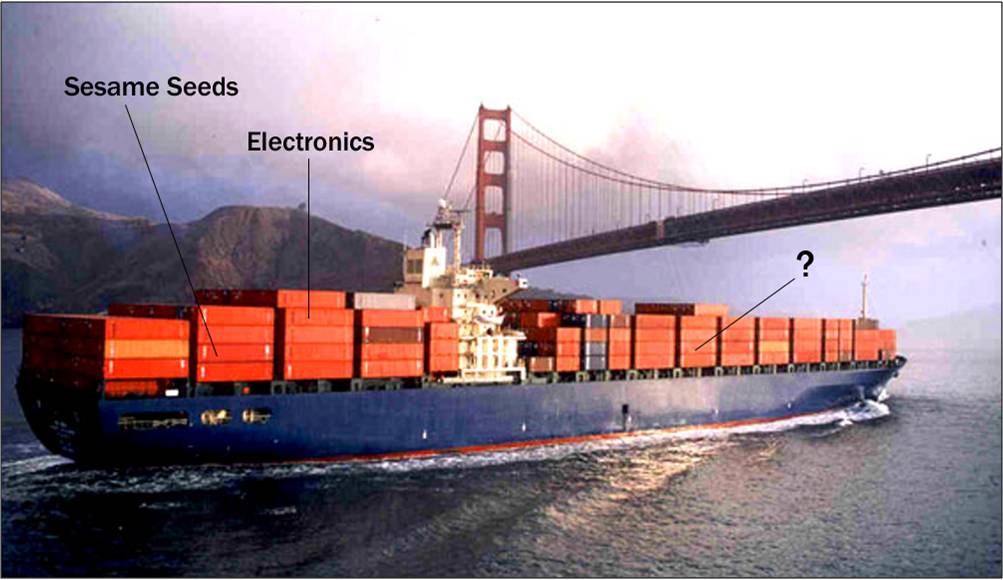 Every day, thousands of cargo containers from around the world pass through our nation’s sea ports carrying items we need, and possibly some that are not so welcome: drugs, explosives, chemical, biological, or radiological weapons – even human cargo. The possible concealment of such items in containers led lawmakers to call for the screening of all ocean cargo containers—thousands per port per day.
Every day, thousands of cargo containers from around the world pass through our nation’s sea ports carrying items we need, and possibly some that are not so welcome: drugs, explosives, chemical, biological, or radiological weapons – even human cargo. The possible concealment of such items in containers led lawmakers to call for the screening of all ocean cargo containers—thousands per port per day.The Department of Homeland Security’s (DHS) U.S. Customs and Border Protection (CBP) is charged with the critical task of securing the country from terrorists and their weapons while facilitating legitimate trade and travel, including the monitoring of what’s in thousands of sea cargo containers as they pass through CBP screening. These containers must be inspected quickly and accurately, and without the business at each port grinding to a halt when they do so.
The DHS Science and Technology Directorate (S&T) and its Transportation Security Laboratory (TSL) in Atlantic City, NJ, have developed a way to test technical solutions to this need: the Container Security Test Bed (CSTB) – an outdoor “laboratory” allowing researchers and developers from government, academia, and industry to explore novel ways to detect threats in a cargo container.
The CSTB is run by TSL engineers and simulates exactly the cantilever cranes used to unload container ships. The CSTB allows a container to be picked up, moved, and put down in minutes, mimicking both the way and the timeframe in which each container is taken off a ship and put onto the dock.
“Give me the right tools – a gas chromatograph, a mass spectrometer, and an hour’s time – and I can tell you what’s in a 40-foot container,” said Dave Masters, the S&T Program Manager who oversaw the creation of the Test Bed. “But a maritime container terminal can’t spare an hour. It needs its cranes to move goods, not run experiments. The CSTB gives any new sensor system a real-world workout that replicates both screening the items in a shipping container, as well as the standard loading/unloading operations at a seaport. Sensors must survive the container being hoisted up, moved quickly, and slammed down – they cannot be so delicate that they cannot survive gritty port conditions.”
 S&T researchers are encouraging technology developers to test any kind of sensor at the CSTB. Detection technologies constantly undergo improvements in order to detect trace amounts of substances — and do so very quickly. Chemical-based sensors, currently in use for aviation security, may find trace amounts of explosives, drugs, or other illicit substances, while laser-based methods that can “read” the physical properties of target molecules detection methods are also in development.
S&T researchers are encouraging technology developers to test any kind of sensor at the CSTB. Detection technologies constantly undergo improvements in order to detect trace amounts of substances — and do so very quickly. Chemical-based sensors, currently in use for aviation security, may find trace amounts of explosives, drugs, or other illicit substances, while laser-based methods that can “read” the physical properties of target molecules detection methods are also in development.What is the specific challenge? S&T researchers are collaborating on techniques to get a representative sample of the air inside the container to the sensor itself. Representative samples of air inside a cargo container must be captured through an air vent standard containers have, and then that sample will pass through several variations of detection sensors. This technology was demonstrated to S&T by a joint effort between MIT and Lincoln Labs in 2010.
Alternatively, sensors may be built into the cargo container and programmed to send information on any illicit content to the receiving seaport while the container is still en route. In October 2011, ConSearch, LLC conducted a feasibility demonstration of their in-situ chemical and radiological detection capability. The demonstration consisted of simulating a trans-oceanic voyage of a 40-foot container that contained several threat types and employed a method of using multiple sensors to obtain a comprehensive view of the chemical/radiological content.
To evaluate explosive detection methods, TSL scientists are also are testing methods to present samples to sensors more quickly and accurately.
“We’re exploring the art of the possible. The things we’re doing, you can’t do on paper. You need to get your hands dirty,” says Masters.
The S&T Container Security Test Bed provides a unique opportunity for public and private sector partners to research and collaborate on novel ways to detect threats in a cargo containers—working together to make our shipping industry more safe, secure and resilient.







No comments:
Post a Comment